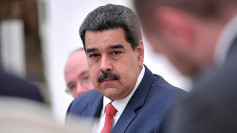The coronavirus, that was first detected in Wuhan, China in December 2019 has now infected 7,006,436 and killed 402,699 worldwide, according to real-time data tracker from Johns Hopkins University and as of May 8.
The 7 million-mark was reached following weeks of global protests condemning police brutality against African Americans in light of George Floyd's death. The man died while a Minnesota police officer kneeled on his neck for nine minutes.
In the United States, Dr. Anthony Fauci, the head of the National Institute of Allergy and Infectious Disease, said protests are drawing large crowds that breached social distancing measures. The crowds are flocking in areas where there is an active transmission, Fauci highlighted.
The early weeks of protest saw crowds congregating in Los Angeles and New York. The latter holds the highest number of deaths and infections in the country. As weeks pass by, crowds are also flocking in small cities like Savannah in Georgia, Erie in Pennsylvania, Greenville in South Carolina.
Saturday, May 6, became the largest day of protests since demonstrations broke in the country. Thankfully, people have become calmer that by Sunday, Mayor Bill de Blasio lifted the curfew in New York. At the same time, President Donald Trump pulled the National Guard out of Washington.
Still, however, in as far as COVID-19 is concerned, as long as crowds continue to flock, concerns remain high about the rate of transmission.
George Floyd's death protests have also broken out in the United Kingdom. Britain's Health Minister, Matt Hancock, said the protests attended by large crowds were "undoubtedly a COVID-19 risk."
On Sunday, Brits had torn down a slave trader statue in Westminster. Police dispersed the crowd only to flocked once again in other cities such as Bristol, Manchester, Wolverhampton, Nottingham, Glasgow, and Edinburgh.
Elsewhere, protests are also happening in France, Australia, South Korea, and Japan, raising more concerns about transmissions.
The America region - which included the North American countries as per classification by the World Health Organization - has the highest number of cases and deaths. The region has 3,234,875 cases, with 79 505 new infections reported within 24 hours. Deaths in the region have already reached 179,394 with 3,227 fatalities in the past 24 hours.
Europe is second to have high cases and deaths - 2, 268, 311 cases ( new cases 18 312), and 183, 732 deaths (new deaths 604).
Eastern Mediterranean is catching up with total cases of 623,684 cases (new cases 18 658) and 14,326 deaths ( new deaths 302).
Meanwhile, South-East Asia has 350,542 cases ( new13 965) and 9 672 deaths ( new deaths 356) while Western Pacific has 190,236 cases (1 206) and 7,103 deaths (11).
WHO is currently keeping a close watch on Africa since the continent has the weakest health facilities. The continent now has 131,324 cases (new cases 4, 763) and 3,148 deaths ( new deaths 86).
Here are the countries with more than 100,000 total cases as of May 8:
691,758 Brazil
467,073 Russia
287,621 United Kingdom
257,486 India
241,550 Spain
234,998 Italy
196,515 Peru
191,102 France
185,750 Germany
171,789 Iran
170,132 Turkey
134,150 Chile
117,103 Mexico
101,914 Saudi Arabia
Here are the countries with more than 20,000 deaths:
110,503 deaths - US
40,625 deaths - United Kingdom
36,455 deaths - Brazil
33,899 deaths - Italy
29,158 deaths - France
27,136 deaths - Spain






